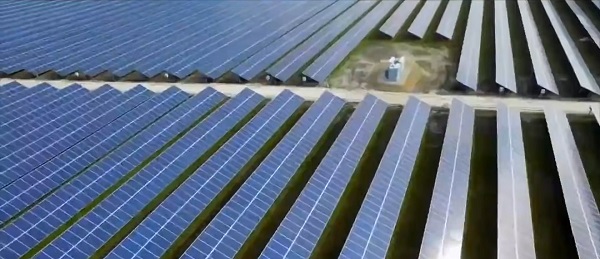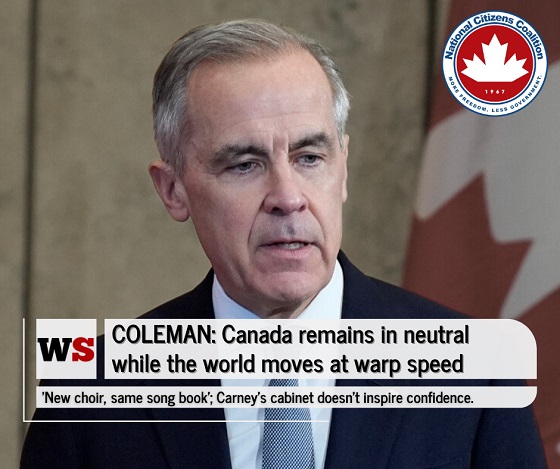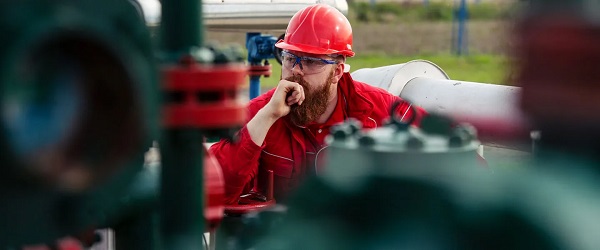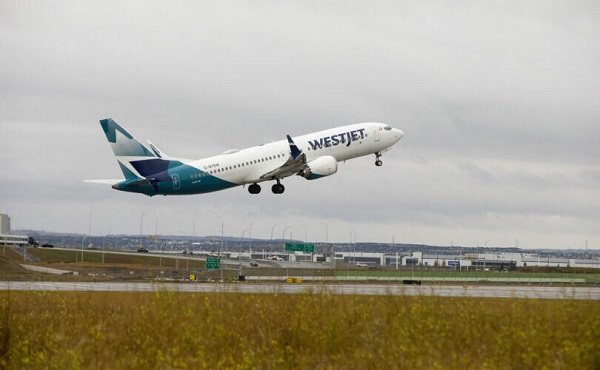COVID-19
Pandemic: We need to be smarter than China (and Italy)

**This article has been amended in light of the ongoing situation in Italy. It was originally posted to dredles.com.

Dr J Edward Les is a Pediatric Emergency Physician practicing in Calgary.
In the winter of 2017 two 17-year-olds with a 3-D printer created a little spinny thingy called the Fidget360 and promoted it on social media.
Fidget spinners quickly went viral. And because there was no patent, dozens of companies hurried to produce knockoffs.
By May of 2017 the little gadgets accounted for 17% of all online toy sales and had spun their way into every nook and cranny of the globe. Every kid I tended to in the emergency department of my hospital was spinning one of the plastic gizmos—and more often than not, so were their parents.
But then—just as quickly as it started—it was over. By September of 2017 fidget spinners had vanished, consigned to trash bins and forgotten corners of toy rooms and closets.
There’s a word we use to describe this sort of phenomenon, where something spreads quickly throughout an entire country, continent, or the whole world and affects an exceptionally high proportion of the population before burning itself out.
That word is pandemic, of course. We use it to describe massive outbreaks of disease, typically, not outbreaks of fidget spinners.
It’s a scary term—one that conjures up images of the Spanish flu, which wiped out up to 100 million people in 1918 (five percent of the world’s population); or of the bubonic plague, which ravaged the globe in the 14th century, killing half of Europe’s people and knocking the world population down to 350 million from 475 million.
Not all pandemics are as lethal as the Black Death or the Spanish flu, mind you. The H1N1 influenza pandemic of 2009, for instance, killed approximately half a million people—a big number, but roughly on par with the death toll extracted by the seasonal flu each year.
Another pandemic—COVID-19—now threatens the world. This time the viral assassin is a novel coronavirus that originated in China.
How much danger we are in remains a matter of intense debate. Death toll predictions run the gamut from the ridiculous to the obtuse, from epic eradication of mankind on the scale imagined by novelist Stephen King in The Stand, all the way to: “Nothing to see here, folks, keep calm and carry on.”
Rampant misinformation, relentless spin, and wacky thinking amplified by social media hasn’t brought clarity, suffice it say. U.S. President Donald Trump labeled the coronavirus a Democratic conspiracy. Paranoid wing-nuts blather on about Chinese bioweapons. Some people blame a vengeful God; others warn shrilly (and wrongly) of the risk of mail from China or of the danger of eating in Chinese restaurants.
I wrote about the coronavirus outbreak on February 20, seemingly an eternity ago. At the time I wasn’t overly stressed—just a bit fidgety. Twelve thousand people were infected and 250 were dead, pretty much all in the epicentre of Hubei province in China; but it seemed like a drop in the viral bucket compared to the seasonal flu, which takes out up to 600,000 people globally per year.
Plus, after initially dismissing the virus as a threat, the Chinese had reacted with unprecedented measures, locking down Wuhan and a slew of other cities, cordoning off Hubei province, shutting down mass transit, closing airports, and confining 60 million people to their homes—berating those who dared to venture outside with government drones.
It seems to have worked for the Chinese. Epidemiologic data show that the virus continued to spread post-lockdown, but primarily among families already infected pre-quarantine. Community spread was stopped in its tracks.
The number of cases in Hubei province ultimately crested at around 67,000, with 2900 dead. (Just a smattering of new cases are being reported.)
By the time the Chinese instituted their draconian quarantine measures, of course, the viral dandelion had gone to seed: infectious spores of coronavirus had already blown around the world.
Still, the worst-case scenario for Canada, I surmised, surely couldn’t be worse than what Hubei endured.
Applying Hubei’s experience—a population infection rate in that province of only 0.11% (67,000 divided by 60 million) and a case fatality rate of 4.3%— to Canada’s population of 37 million would mean roughly 41,000 cases and 1750 dead in Canada.
Bad enough—but seasonal influenza kills 3500 Canadians every year; traffic accidents kill 2000 people.
So not a huge deal, right?
But here’s the problem: Canada is not China. Neither is the U.S., or any of the other countries where coronaviral spores have taken root.
In one sense, at least, that’s a good thing: our air is much cleaner, and far fewer of us smoke cigarettes, leaving us with lungs presumably less hospitable to invading coronavirus.
However, we are not going to quarantine entire Canadian cities and provinces (it’s too late for that now anyway).
We’re not likely to close airports and shut down mass transit.
We’re not going to chase our citizens with drones.
We’re not going to mandate that entire city populations stay in their houses for weeks or months on end.
And we’re not likely to be as good at keeping infected patients alive—not because we lack the know-how, but because we lack adequate space, supplies, ventilators, and personnel.
The WHO’s Bruce Aylward, commenting on the case fatality rate observed in China, had this to say about the regime’s efforts:
“That’s the mortality in China — and they find cases fast, get them isolated, in treatment, and supported early. Second thing they do is ventilate dozens in the average hospital; they use extracorporeal membrane oxygenation (removing blood from a person’s body and oxygenating their red blood cells) when ventilation doesn’t work. This is sophisticated health care. They have a survival rate for this disease I would not extrapolate to the rest of the world. What you’ve seen in Italy and Iran is that a lot of people are dying.”
Canada may do better than Italy and Iran. But our hospitals are already stuffed to the gills (and people won’t stop suffering from heart attacks and strokes and trauma and cancer just because COVID-19 is kicking around).
We can’t, like the Chinese, build enormous hospitals almost overnight specifically for coronavirus patients. (We can’t even build a pipeline in this country.)
Does all of the above mean we’re screwed?
Not at all.
Certainly, we can’t do what the Chinese did. Nor should we try. The Italians are trying, and their country is descending into unmitigated chaos.
We must adopt a radically different strategy.
First, we must acknowledge that stopping this virus is like trying to stop the wind.
We must acknowledge what any seasoned epidemiologist can tell you: viral pandemics burn themselves out—but only after millions of people get sick and recover, freshly equipped with powerful antibodies to the virus. The resulting collective population immunity—called herd immunity—prevents the virus from hopping from person to person to person with epidemic speed, and the pandemic dies out.
There are no other options. Well, there are two, but neither are on the near horizon: complete eradication of the virus (as mankind did with smallpox), or the development of an effective vaccine.
We must let this pandemic burn itself out.
But just as importantly we must control how that happens.
The novel coronavirus has an R0 value of 2.2, which means that each person can infect 2.2 others. The case fatality rate across all of China was 2.3% (it’s higher in Wubei province and outside of China—it’s over 4% in Italy, for example). Those numbers, ominously, aren’t much different from the Spanish flu.
Knowing that most of the world cannot replicate China’s totalitarian lockdown to control viral spread, epidemiologists estimate that between 30-60% of the world could end up infected with coronavirus.
Wait a minute, you say: Hubei province had a population infection rate of only 0.11%. That’s a far cry from 30%.
Sure. But the Asian elephant in the room is that China, by its draconian quarantine measures, prevented community spread—which also very likely prevented the development of herd immunity.
When Wuhan and her 15 sister cities are re-opened; when the stranglehold on Hubei province is released; when the airports re-open and the trains start running and commerce restarts: we may see a second wave of infection in China. The virus is not gone, and because the Chinese prevented community spread from continuing for two months, most of their population is probably not immune.
It was the second wave of the Spanish flu, remember, that killed most of the people in that pandemic. And China could be on the cusp of a second wave of COVID-19.
We must not allow this to happen globally with COVID-19.
If epidemiologists are correct even at the low end of their estimates—30% of the world’s population infected and a case fatality rate (also at the low end) of 2.3%—that means 53 million dead: roughly 255,000 of them in Canada (73 times the death toll of the seasonal flu).
Horrific stuff. But the achilles heel of the coronavirus is that it primarily kills old people. And we can exploit that.
The Spanish flu killed across demographics, disproportionately killing those in the age categories of 20 to 40, over 65, and younger than five. The high mortality in healthy people was a unique feature of this pandemic – as was the case with the 2009 H1N1 pandemic.
But that’s not the case with COVID-19: it kills mostly the elderly and the infirm. The mortality rate in those over 80 is 15%; in those over 70, eight percent; and in those over 60 it’s just under four percent. In Italy, where the death toll stood at 366 as of Sunday, the average age of those who have died is 81.
At younger ages the mortality rate drops off dramatically – the vast majority of younger people, especially kids, recover without incident, most of them with mild or no signs of illness.
But—and this is key—even though children (and healthy adults) may be completely symptomatic or have only mild symptoms after they acquire coronavirus, they still carry the virus: they are vectors, much like the rats that spread the bubonic plague in the 14thcentury.
We are not going to exterminate the children as we did the rats—but we can take real steps to mitigate the risk of viral spread.
Those most vulnerable to the deadly effects of this virus—the elderly and the medically compromised—should self-quarantine while we judiciously allow the virus to do what it does among the rest of us.
That means that we all continue to protect ourselves sensibly, just as we do from the flu: wash our hands, cough into our elbows, stay home if we are sick, learn the “Ebola handshake”, and stay away from hospitals and clinics unless truly necessary.
In an earlier version of this piece I wrote: “We must not close the schools, the airports, the theatres, the restaurants.”
I’m no longer so sure.
This is a fast-moving epidemic, and it is imperative—imperative—that we pay close attention to what is happening elsewhere as this virus marches around the world.
Reports out of Italy are deeply sobering: the elderly are dying, and they are sickening at a furious rate. Hospital resources have been completely overwhelmed.
The Italians were utterly unprepared for the sheer volume of critically ill patients requiring intensive care all at once.
And so is Canada.
We need to slow the virus down. We need to impede the rate of its spread to the elderly.
It may be prudent, as COVID-19 establishes a foothold in Canada. to proactively close schools and universities, and to cancel concerts and conferences and other mass gatherings.
Messaging is key. School closures should not incite fear and alarm. The risk to the young and healthy remains very low—whether or not we close schools and cancel concerts doesn’t change that.
But we must do whatever we can to slow the dissemination of virus to the elderly and medically compromised, to as much as possible lessen the strain on our health care resources.
It is far easier for hospitals to deal with a crush of infected, critically ill patients over a four month period than over a four weekperiod.
We must, in the language of disease, “flatten the epidemiologic curve”.
We must sequester the elderly and the medically compromised away from the rest of the population. They should avoid crowds, travel, and children—likely until August or later.
We cannot do this by decree—that will never work. But we must shout this message of self-quarantine from the rooftops loudly and repeatedly so that the elderly and medically compromised understand that if they do not comply, they stand a high risk of dying.
At the same time, it is essential that we protect heath care workers and those who are medically at-risk in hospitals: we must enact systems of external triage (a.k.a. drive-through emergency medicine), external treatment sites, telemedicine, mobile treatment teams, and so on.
These measures are critical to to lessen the coming unprecedented demands on our health care system, to reduce the death rate and to buy time until we either have herd immunity or an effective vaccine.
Our politicians and medical leaders have dropped the ball on this. They’ve been fidgeting while this virus burns, spinning confused and garbled messages of half measures and wrong measures.
It’s time to stop the fidgeting, to do away with the spin, and to lead with strength and clarity.
We must not allow the world to succumb to chaos.
We must not allow the economic infrastructure of the world to be destroyed, and society completely upended, by a viral pandemic that targets primarily the elderly and medically compromised.
There is no need to panic.
We should remain calm and carry on.
But nor should we keep our head in the sand.
As Bruce Aylward put it:
“Get organized, get educated, and get working.”
COVID-19
Freedom Convoy trucker Harold Jonker acquitted of all charges

From LifeSiteNews
The JCCF noted his truck was parked along Coventry Road, which is away from the downtown area of Ottawa, and that he faced no charges or fines while he was in the city for the protest.
One of the more prominent truckers involved in the 2022 Freedom Convoy protest movement has been acquitted of all charges.
On May 20, Justice Kevin B. Phillips of the Ontario Superior Court of Justice acquitted Harold Jonker of all charges. Jonker runs Jonker Trucking Inc. out of Caistor Centre in Ontario’s Niagara region, and rose to prominence for his role in the Freedom Convoy protest movement that sought to bring an end to all COVID-era mandates in Canada.
The Justice Centre for Constitutional Freedoms (JCCF), which helped Jonker in his case, noted in a press release that Justice Phillips concluded that “while the broader Freedom Convoy could be seen as a collective act of mischief, the Crown had failed to prove that Mr. Jonker was guilty of any of the charges beyond a reasonable doubt.”
“Harold and I are elated with the outcome of his case. We agree with the trial judge that the Crown had not proven its case beyond a reasonable doubt,” said Constitutional lawyer Chris Fleury.
Jonkers stated that he is “very thankful for the excellent legal support provided by the Justice Centre for Constitutional Freedoms, and thankful that the judge saw through the Crown’s weak case and had the courage to do the right thing.”
In February 2022, Jonker drove to Ottawa in his semi-truck alongside 12 other trucks from Jonker Trucking. A documentary called Freedom Occupation, which was distributed by independent outlet True North, featured him prominently.
In May of 2023, about 15 months after he participated in the Freedom Convoy, Jonker was told to turn himself over to the Ottawa Police Service to be processed for fingerprinting and to appear before a court on charges related to his association with the Freedom Convoy. He was charged with mischief, counselling mischief, intimidation, and counselling intimidation.
The JCCF noted his truck was parked along Coventry Road, which is away from the downtown area of Ottawa, and that he faced no charges or fines while he was in the city for the protest.
During the trial, held from May 12 to 14, saw the Crown argue before the Ontario Superior Court of Justice in Ottawa allege that Jonkers aided in organizing the Freedom Convoy.
Justice Phillips, as noted by the JCCF, addressed “two main themes advanced by the Crown,” the first being that the Crown had claimed that the media interviews Jonkers gave both during and after the protest amounted to counselling mischief.
“However, Justice Phillips found that Mr. Jonker was treated by interviewers like a ‘foreign correspondent’—someone describing events as he witnessed them. While supportive of the protest, Mr. Jonker’s words were expressions of opinion, not incitement to unlawful action,” noted the JCCF.
The second theme claimed by the Crown was that Jonkers was responsible for Jonker Trucking vehicles located in Ottawa’s downtown core.
“The Court found insufficient evidence to show that Mr. Jonker had control over those trucks,” noted the JCCF.
“Justice Phillips noted that, in Crown-submitted videos, Mr. Jonker explicitly stated that his own truck was parked in a yard, not downtown. Furthermore, the Crown offered no evidence regarding the corporate structure of Jonker Trucking Inc. that could prove Mr. Jonker had authority over vehicles belonging to the company.”
Trucker put his trust in ‘God’ after he was charged
In 2023, LifeSiteNews had reported on Jonkers, who noted at the time that the “truth will prevail,” and that he was “confident” in the face of his four criminal charges because he places his trust in “God.”
Jonker, who conducts about 90% of his trucking business in the United States, said the reason he participated in the Freedom Convoy was that he did not like the way COVID restrictions were impacting most Canadians.
The Freedom Convoy protest resulted in former Prime Minister Justin Trudeau enacting the Emergencies Act (EA) on February 14, 2022, to shut it down.
Trudeau had disparaged unvaccinated Canadians, saying those opposing his measures were of a “small, fringe minority” who hold “unacceptable views” and do not “represent the views of Canadians who have been there for each other.”
Trudeau revoked the EA on February 23 after the protesters had been cleared out.
Hundreds of protesters were arrested for participating in the Freedom Convoy while the EA was in place. Many had their charges dropped. However, some still have outstanding charges.
The use of the EA resulted in nearly $8 million in locked funds from 267 bank accounts. Additionally, 170 bitcoin wallets were frozen.
espionage
Canada’s Missing Intelligence Command: Convoy Review Takes on New Relevance After FBI Warnings
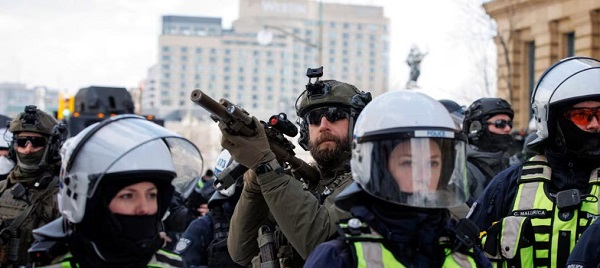
 Sam Cooper
Sam Cooper
An element overlooked in previous analyses of Natterjack may be its most damning: the complete absence of an organizing vision across Canada’s security and intelligence arms.
As Ottawa faces mounting pressure from Washington to respond to fentanyl trafficking, human smuggling, and terror threats stemming from a convergence of Chinese Communist operatives and transnational mafias from Mexico and Iran, a fresh assessment of Canada’s policing strategy and governance reveals the stunning absence of a “Criminal Intelligence Committee to deal with a number of intelligence policy and related issues”—while simultaneously raising troubling doubts about the RCMP’s capacity to prioritize, analyze, and target serious threats free from political influence.
The Bureau’s comparative analysis is based on a sweeping 2024 external review of the RCMP’s response to the pandemic-era “freedom convoy,” which suggests Canada’s federal police force—working for “clients” who do not understand or value how intelligence should shape decision-making—bent under severe political pressure, compromising its intelligence collection and reporting integrity, and helping execute an unprecedented crackdown on citizens’ financial freedoms during the winter 2022 protests in Ottawa.
The 92-page report, produced under a post-operation initiative called Project Natterjack, paints a portrait of intelligence breakdowns, governance failure, and inappropriate political influence—particularly from senior officials in Prime Minister Justin Trudeau’s government. The review, first obtained by The Canadian Press under the Access to Information Act, included survey responses from 1,641 RCMP officers and personnel deployed during the protests, which paralyzed downtown Ottawa and disrupted key international border crossings.
Yet an element overlooked in previous analyses of Natterjack may be its most damning: the complete absence of an organizing vision across Canada’s security and intelligence arms.
This structural vacuum comes at a time when the national security threats facing Canada are increasingly hybridized—blending terrorism, organized crime, election interference, cyber warfare, and financial infiltration. These are precisely the kinds of threats Washington is now pressing Ottawa to address, including investigations into fentanyl superlabs and hostile networks tied to the Chinese Communist Party, Mexican cartels, and Iranian and Russian threat actors.
Amid what the U.S. government sees as a growing vulnerability that Ottawa has failed to address in coordination with Washington under Trudeau’s Liberals, the Natterjack report highlights a deeply relevant structural failure in Canadian policing.
“Many interviewees expressed a level of concern that beyond the informal networks that loosely bind criminal, tactical, and strategic analysts from a variety of law enforcement and security and intelligence agencies, there is not a recognized national body that comes together to advocate, address and advance issues in criminal analysis,” the report states. “The absence of a Criminal Intelligence Committee to deal with a number of intelligence policy and related issues appears glaringly missing and should be explored.”
Regarding the “freedom convoy,” the review’s most serious suggestion is that RCMP intelligence officers felt pressured to present the protests through the lens of “ideologically motivated violent extremism”—a national security framework typically reserved for terrorism investigations. Intelligence teams were subjected to hourly briefing demands from federal officials and were forced to issue rapid assessments under tight timelines, with resulting reports often presenting skewed or misattributed findings.
“Interviewees also indicated that there were issues with information and intelligence that was disseminated to external Government of Canada agencies,” the report states. “Specifically, some Government of Canada partners would misrepresent the information or misattribute third-party information as RCMP information… Interviewees and survey respondents felt immense pressure from the Government of Canada to be briefed on a regular basis… in particular when briefings were requested on an hourly basis.”
As the review notes bluntly: “When there is that much pressure to produce a report within an hour or a few hours’ time, it is not productive.”
Taken together, the findings paint a sobering portrait of a federal police force struggling to preserve its independence and credibility under political strain. While officers were deployed to confront a disruptive but largely peaceful protest, critics inside and outside government have pointed to the RCMP’s relative inaction toward far more dangerous networks—namely, fentanyl trafficking cartels, Chinese underground banking structures linked to the same political influence operations involved in federal election interference, intelligence-connected money laundering syndicates, and hostile state-sponsored actors operating inside Canada.
One telling passage indicating a scramble within RCMP command to produce findings on ideological extremism—whether fully valid or not—reads: “Ideologically Motivated Criminal Intelligence Team and the Joint Intelligence Group were both operating to provide the strategic threat picture, and reaching in directly to the Divisions for intelligence updates. As such, some interviewees noted that they were inundated by requests for intelligence updates from different intelligence teams at National Headquarters.”
In parallel, the federal cabinet invoked the Emergencies Act—suspending civil liberties and activating sweeping enforcement powers that allowed financial institutions to freeze protestors’ bank accounts. Between February 15 and 23, 2022, the RCMP’s Federal Policing Criminal Operations Financial Crimes Unit made 57 disclosures to banks and other institutions, targeting 62 individuals and 17 businesses for asset freezes.
The report pointedly states: “The act of participating in a demonstration is not in itself a form of ideologically motivated violent extremism.” Yet that nuance appeared largely lost amid the political urgency to classify the protests as a national threat.
Interviewees also noted limitations in their ability to disseminate protected information and intelligence to certain external agencies and private financial institutions. Specifically, they indicated that encryption was not consistently available across these external channels.
Perhaps most revealingly, the review found that senior officials—referred to as intelligence “clients”—did not appear to value intelligence or allow it to meaningfully guide decision-making during the crisis. “Interviewees and survey respondents expressed the need to educate intelligence clients on the value of intelligence and how it can be used for decision making,” the report notes. “Interviewees noted that the role of intelligence was not valued during the convoy-related events.” The admission sits uneasily beside the broader findings: that RCMP intelligence was not only shaped to support a political narrative that exaggerated the role of ideological extremism in the protests, but ultimately sidelined when it failed to serve that narrative.
The report also paints a picture that fits with a serious assertion previously conveyed to The Bureau by an RCMP source: that in the days following the convoy’s dispersal, investigators felt they were pressured to reconstruct investigative timelines to match political expectations—to sustain a national security narrative even when the underlying evidence did not necessarily meet threshold.
The Emergencies Act was revoked after just nine days. In January 2024, a federal judge ruled that the Trudeau government’s invocation of the Act was both unnecessary and unlawful, concluding that the legal threshold for a national emergency had not been met.
According to the review, RCMP officials shared protected personal information with financial institutions using processes that lacked consistent legal oversight. The Office of the Privacy Commissioner raised formal concerns, citing the RCMP’s reliance on open-source and social media research to flag individuals—many of whom had no demonstrated connection to criminal activity.
The Natterjack review further confirms that RCMP intelligence operations during the protests were defined by duplication, confusion, and political interference. At least three separate intelligence units—the Ideologically Motivated Criminal Intelligence Team, the Combined Intelligence Group, and the Joint Intelligence Group—were simultaneously tasked with protest reporting, resulting in overlapping and sometimes circular intelligence products. RCMP sources said the structure was unsustainable and exacerbated by National Headquarters’ failure to provide unified command or governance.
Meanwhile, on Sunday, in a televised interview that sent shockwaves through Washington, Ottawa, and Victoria, FBI Director Kash Patel warned that a new axis of global threat actors—consisting of Chinese Communist Party operatives, Iranian proxies, and Mexican cartel networks—is exploiting Canada’s lax border enforcement, immigration systems, and critical infrastructure in Vancouver to move fentanyl and terror suspects into the United States.
“Where’s all the fentanyl coming from still? Where are all the narco traffickers going to keep bringing this stuff into the country? The northern border,” Patel said. “Our adversaries have partnered up with the CCP and others—Russia, Iran—on a variety of different criminal enterprises. And they’re going and they’re sailing around to Vancouver and coming in by air.”
Patel’s public assessment aligns disturbingly well with the key findings of a Bureau investigation first published in August 2024. That report, based on testimony and documentary evidence from former Canada Border Services Agency officer Luc Sabourin, warned that systemic corruption and compromised enforcement at Canada’s ports of entry had already created the kind of vulnerabilities now cited by the FBI.
The Bureau is a reader-supported publication.
To receive new posts and support my work, consider becoming a free or paid subscriber.
Invite your friends and earn rewards
-
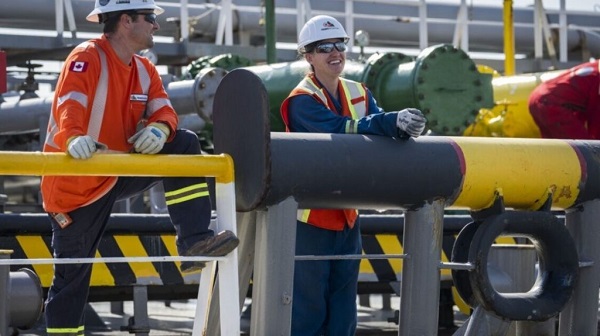
 Economy2 days ago
Economy2 days agoCanada as an energy superpower would empower thousands of families for generations
-

 Alberta2 days ago
Alberta2 days agoBoreal forests could hold the key to achieving Canada’s climate goals
-
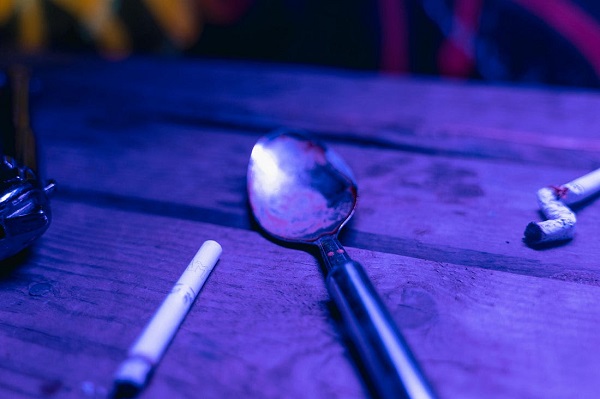
 Addictions2 days ago
Addictions2 days agoNews For Those Who Think Drug Criminalization Is Racist. Minorities Disagree
-
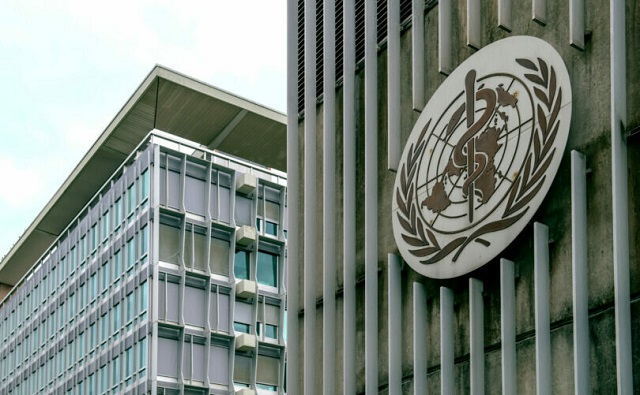
 Health2 days ago
Health2 days agoWHO assembly adopts ‘pandemic agreement’ binding countries to unified response
-
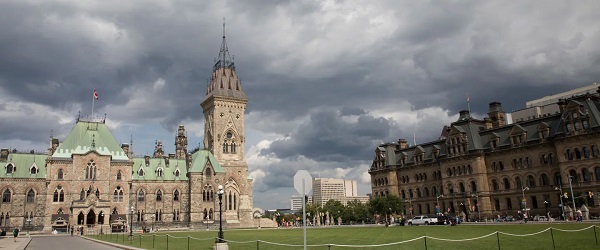
 Business2 days ago
Business2 days agoCarney’s cabinet likely means more of the same on energy and climate
-

 COVID-192 days ago
COVID-192 days agoFDA plans to require placebo trials before approving COVID boosters for healthy people
-

 Banks1 day ago
Banks1 day agoLegal group releases report warning Canadians about central bank digital currencies
-
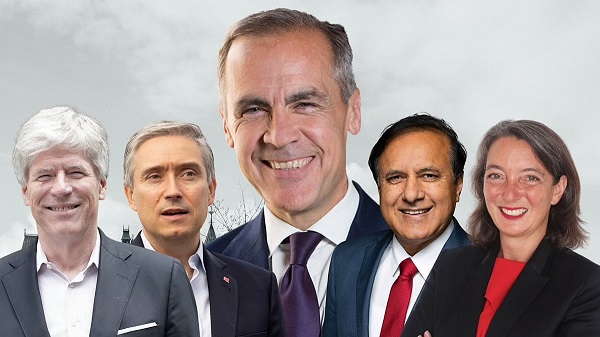
 Business1 day ago
Business1 day agoThe Liberal war on our cost of living lives on

